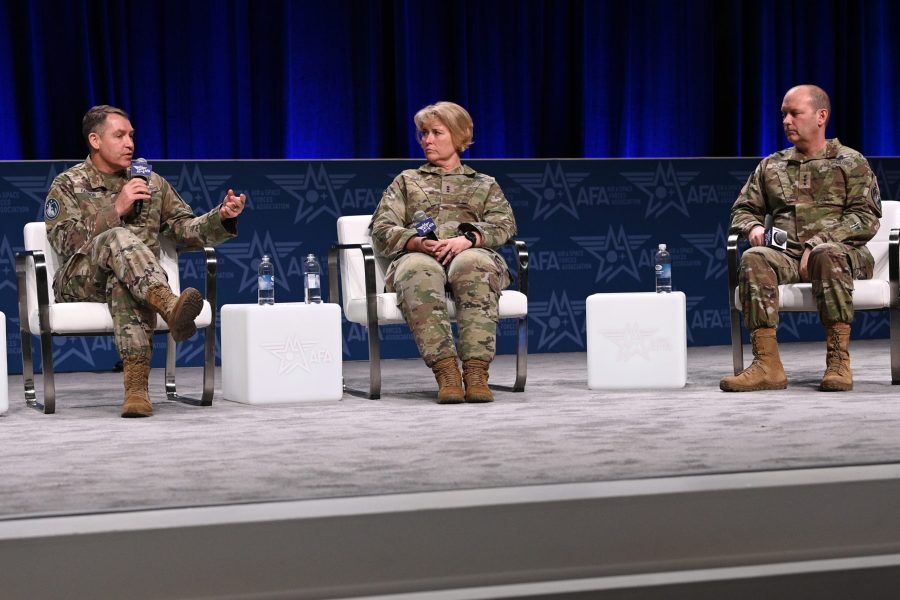AURORA, Colo.—The Space Force is making progress on its plan with the National Reconnaissance Office to enable space-based targeting and replace legacy Air Force aircraft, multiple senior leaders said at the AFA Warfare Symposium.
For several years now, the Pentagon has explored the idea of space-based moving target indication (MTI). Older Air Force platforms like the E-3 AWACS and E-8 JSTARS are considered unlikely to survive long in a potential conflict with China.
“The ultimate goal of this program is to replace legacy air-breathing platforms with more survivable space assets that can perform targeting activities needed to close long-range kill chains on a global scale,” Chief of Space Operations Gen. B. Chance Saltzman said during his keynote address Feb. 13.
The U.S. already has intelligence, surveillance, and reconnaissance assets in space, but those have traditionally been controlled by the intelligence community and are frequently unavailable when military operators need them.
To fill that gap, “the Space Force was able to build on the efforts of the Air Force, analyze options, and select a way ahead in less than a year,” Saltzman said. The future could involve Space Force Guardians working side-by-side with the National Reconnaissance Office. Brig. Gen. Devin Pepper, vice commander of Space Operations Command, later told reporters that his command is leading the analysis for how to field, sustain, train, operate, and more for space-based targeting, while the NRO remains in charge of acquiring the satellites.
Lt. Gen. DeAnna M. Burt, deputy chief of space operations for operations, cyber, and nuclear, said Guardians will work alongside the NRO to provide targeting data to combatant commanders, who will have the authority to task the satellites to gather information.
“Guardians will work the tasking of that system with the combatant command on what they are allocated when the capability is available to them, working on the joint staffs’ allocations and priorities that are given,” Burt said during a panel discussion. “So that will be tasked, worked with the COCOM through the service components at each of the COCOMs back to Guardians who will fly that satellite shoulder to shoulder with the National Reconnaissance Office every day to provide those capabilities.”
Chief Master Sergeant Caleb M. Lloyd, senior enlisted leader for Space Operations Command, compared the arrangement to operations in the traditional JSTARS aircraft: “the NRO is kind of being in the cockpit, and our Guardians would be in the back, in terms of the actual battle management and being able to actually talk down to the tactical level.”
Though NRO would be in the metaphorical cockpit, the military would direct the taskings, a key arrangement given that experts have noted the NRO’s priorities are not always the same as the operational commander’s. Burt emphasized that the combatant commands, not the NRO or another intelligence community agency, would have the authority and priority to task the targeting satellites.
“Ultimately, [the combatant command] would own the collection over their theater and what gets tasked,” said Burt.
Both Burt and Pepper said the data collected by these satellites will be available to the entire intelligence community, but ultimately “it’s the warfighter that we’re building this for,” Pepper said.
In its 2024 budget request, the Space Force outlined plans to spend $243 million on moving target indication this year and more than $1.2 billion over the next five years, describing it as “an evolved weapon system” not a “one-for-one swap” for aircraft like JSTARS. Many details about the program, however, remain shrouded in secrecy.
More broadly, Saltzman, Burt, and Pepper all agreed that targeting isn’t likely to be the only mission that migrates to space in the coming years.
“We’re going to see many phenomenologies go to the space domain, not just MTI,” Burt said. “So this is laying the groundwork for where we go from the future.”
